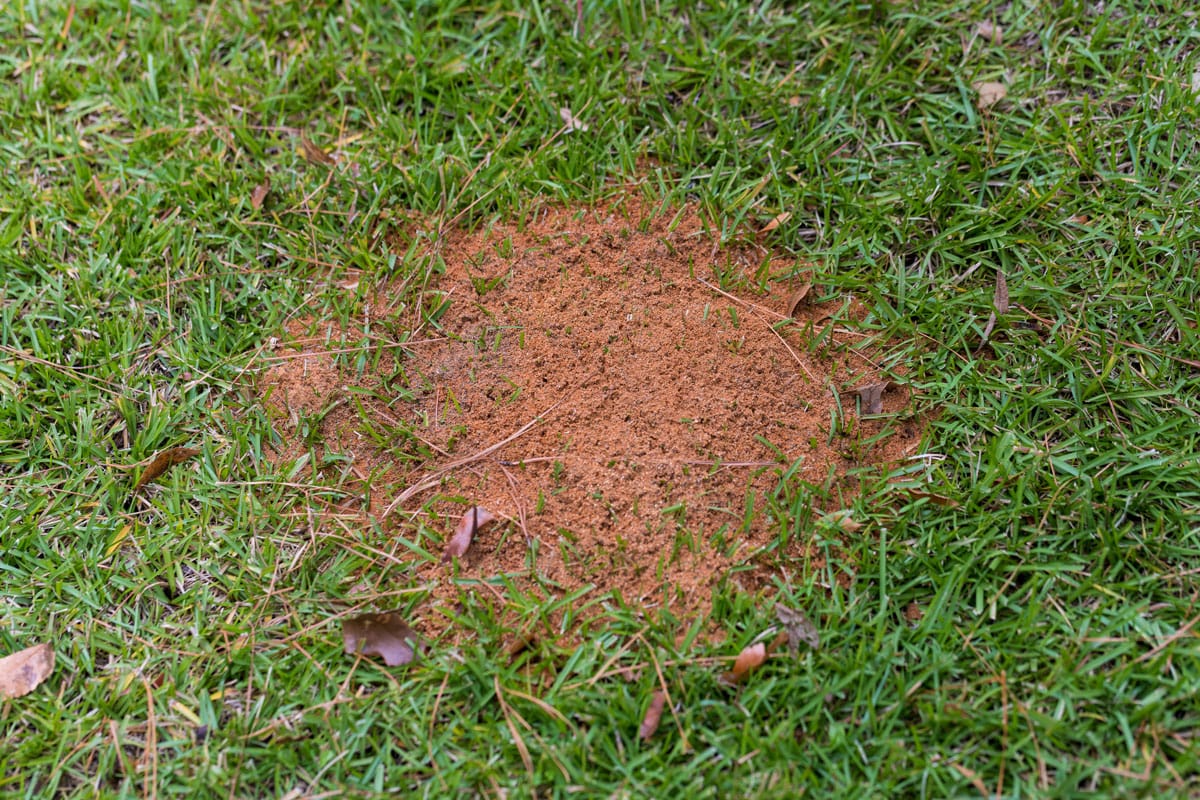I’m all for nurturing a healthy ecosystem, but sometimes you don’t want to have an ecosystem crawling all over your picnic and up the leg of your shorts. In this blog, we’re looking at ways of controlling ants in your lawn.
Ants are amazing little creatures. They have truly sophisticated societies and are just as well organised and as busy as bees are.
In the garden, ants help to aerate the soil, to break down dead plant material and to eat pests such as mites and lava. They are fascinating insects and an important part of the ecosystem. But, as I said in the introduction, nobody welcomes an ecosystem invading their summer afternoon.
On a lawn, ants do very little direct damage. They don’t seem to eat the grass or its roots. However, they do create ant hills. Mounds of earth that ruin the look of a lawn, make the surface uneven for mowing and potentially create areas of bare soil for weeds to colonise. For the most part, they’re a nuisance rather than a threat.

Controlling ants in your lawn
You will know if a colony of ants move into your lawn. It’s not difficult to spot the creatures at work, and as the colony grows, so does the heap of displaced soil.
Waiting for a dry day and just brushing the soil away will help to keep your lawn looking tidy. It won’t hurt the ants or get rid of the colony because they are living underground. If you really can’t bear them living under your lawn, you have two options. Chemical control, or biological control.
As you know, I’d rather avoid the use of chemicals on the lawn, but I will talk you through the options in a moment. For now, lets look at the options for more eco-friendly ant control.
Controlling ants in your lawn without using chemicals
Controlling any unwanted species in your lawn is all about creating conditions that they don’t like. We aerate because moss prefers compacted soils, we scarify because the fungi that cause lawn diseases thrive in the thatch layer.
Ants like dry, well drained soil in undisturbed areas. It’s not unusual to find lovely big ant colonies living in meadows. Farmers leave their meadow grass to grow unchecked from March – June. You don’t know the ants are there until the grass gets cut to make hay.
It stands to reason, that regular aeration and scarification of your lawn will disturb the soil enough to deter ants to a certain extent. But please don’t be tempted to irrigate your lawn so often that it’s too wet for ants to thrive in – if it’s too wet for ants, it’s probably also too soggy for grass to thrive in.
NEVER pour boiling water onto an ants nest in your lawn – you’ll kill the grass and all of the wonderful soil microbes that help sustain a healthy garden.
Nematodes for ant control
Consider using nematodes to clear away the pests. Ants hate the idea of having their predators living close by and will move the nest to protect the colony. The parasitic nematode, Steinernema feltiae, can be used as a non-chemical control for black, red and yellow ants. Safe to children, pets and wildlife.
You just apply to moist soil when the soil temperature is above 5ºC (41ºF) and ensure the soil does not dry out for at least two weeks after applying nematodes. Nematodes are capable of surviving the odd frost; so don’t worry if the temperature falls after you have applied them.
Using store cupboard ingredients to deter ants
I’m reliably informed that ants hate peppermint. So here’s a trick using a few ingredients from your store cupboard that will encourage the ants to move on without damaging your lawn.
Take 20 drops of peppermint essence (the sort you would normally use in baking). Dissolve them in vodka (because the oil won’t dissolve in water) and then pour into a spray bottle with a pint or so of water. Give it a good shake and spray on and around the ants’ nest. You may need to repeat it 2-3 times a day for a couple of days but then, lo and behold, the creatures will up sticks and move away. Easy!
Chemical controls for ants
There’s a good few pesticides on the market that claim to get rid of an ant infestation. If you want to go down the chemical route, I would urge you to research products carefully. Consider other life forms – you don’t want to be contaminating water courses with anything that might upset the eco system, neither do you want to harm beneficial insects or any creatures that might make a meal of the dead ants. If your lawn is used by pets or people, please be extra vigilant about your choice of chemical control. It goes without saying that you should follow the manufacturers instructions to the letter. Wear the protective gear, measure chemicals out carefully and don’t be tempted to alter the recommended dosage.
Levelling out your lawn after the ants have gone
In summary
If you have ants in your lawn, don’t panic. They are useful critters and a good indicator that your garden is a great place for wildlife. Understandably, you’ll probably want them gone from your lawn. There are lots of environmentally friendly ways to persuade them to up sticks and move on.
Do your research carefully, apply the treatments even more carefully, and any aesthetic damage can soon be repaired with a stiff broom and a bit of grass seed.
Come the autumn, be sure to scarify and aerate your lawn to create the kind of conditions that ants don’t fancy returning to
You might find these articles helpful
How to get and maintain your perfect lawn
How to stop leatherjackets damaging your lawn
Love Robbie’s advice? Follow Premier Lawns on Youtube for weekly lawn care videos

